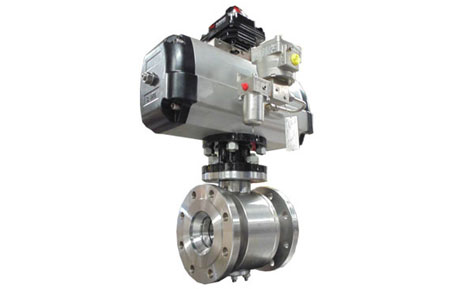The ball valve, popularly known as control valves, contains a rotary ball that controls the flow of substances such as liquid or gas. From its axis, rotating the ball through the lever can let the substance flow or block it. The ball valve includes a port, bore, and a lever. Presently many manufacturing companies produce ball valves that are reliable and long-lasting. One of the producers of ball valves is Dhananjay Choudhary Camtech Manufacturing FZCO.

The ideal measurement to open and close the ball valve is 90 degrees. Few of the ball valves give a 360-degree rotational option that offers full movement to the core. When the ball valve is in the closed position, it is airtight. The ball valve gives more scope for companies that produce chemicals and gasses to secure and control them from flowing.
There are different types of ball valves. To know about its applications, the following information will be helpful. So let’s see how a ball valve works.
Circuit function
Ball valves may have 2 to four ports. Most of the valves have two ways that are controlled by a lever. When the valve is in the open position, you can see the lever in line with the pipe. If the lever is perpendicular, it is in the closed position. In some ball valves, it is fitted with a transmission. Some of the different valve materials are brass, stainless steel, and PVC. Brass valves are used for water, gas, oil, and air mediums. Stainless steel ball valves are used for corrosive liquids such as chemicals, seawater, and swimming pools.
Types
- Trunnion ball valve
For a high-pressure environment, the Trunnion ball valves are suitable. There is an extra anchoring system at the top and bottom. This special feature makes the Trunnion valve more effective for shutoff liquids. The Trunnion mounted stem helps in handling more pressure and thrust from the pipe; this provides airtight control of substances. Even when there is excess friction, the function of shutting off is not affected, and the life of the valve is not reduced due to extreme pressure.
- Rising ball valve
Seal rubbing is one of the elements that cause valve failure. However, the rising ball valve is built with tilt and turn function that reduces the risk of seal rubbing. For a uniform flow of liquid and gas, the valve allows the center core to tilt from the seal. When the valve is in the closed position, the core holds its seat for a complete shutoff.
- Floating ball valve
The floating ball valve is built in a way where the ball floats with the flow. There is no steady ball like the Trunnion ball valve. The floating ball valve is connected only to the stem. When the flow of liquid is over, the ball automatically presses against the seat that seals the flow.
Why choose ball valves?
Ball valves are popular for their compact and fewer maintenance designs. They are useful for different applications. The ball valve is useful both for industrial and residential purposes. A ball valve is available in markets that can be used effortlessly without special instructions.
